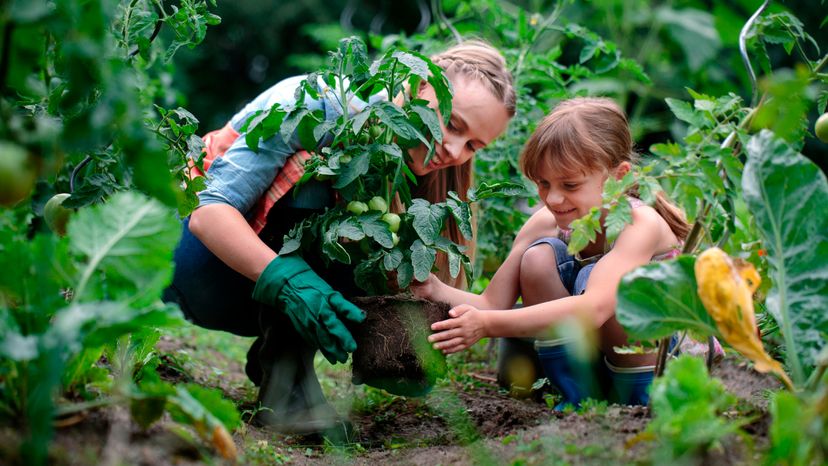
The backyard compost pile is the ideal way to reuse most of your garden and kitchen waste and get benefits galore. Composting is essentially a way of speeding up the natural process of decomposition by which organic materials are broken down and their components returned to the soil. The decaying process happens naturally but slowly. The proximity, moisture, and air circulation of a compost pile encourages this process. Composting converts plant and other organic wastes into a loose, peatlike humus that provides nutrients to growing plants and increases the soil's ability to control water.
Composting can save money you would otherwise spend on soil conditioners and fertilizer. It can save time, too, since it gives you a place to dispose of grass clippings, weeds, and other garden debris.
Advertisement
Garden waste can be turned into good compost in less than a year if the pile is properly managed. When the compost is ready -- coarse, dark brown, peat-like material -- it can be used for many purposes. Compost can be added to potting soil for starting garden seeds indoors. It can also be used as a mulch to protect a plant's roots from the hot, dry summer sun. Compost is also an excellent material to incorporate into garden soil to help control moisture: either increasing the water-holding capacity in sandy soils or improving drainage in heavy clay soils. The more organic matter you add, the more you improve the texture of the soil. Blend the compost into the soil to a depth of 12 inches, making sure it is evenly dispersed through the entire planting area. When compost is added to the soil, it will absorb some of the soil's nitrogen. To compensate for this, organic or inorganic fertilizer and work it into the soil with the compost.
Except for diseased and pest-laden materials or materials that have been treated with herbicides, almost any type of garden waste can be composted. You can also use such kitchen leftovers as vegetable and fruit peels, vegetable tops, coffee grounds, tea leaves, and eggshells. Don't use meat products or greasy foods, which tend to smell bad and attract animals. Composting material should be kept moist but not soggy, and it should be supplied with a nitrogen fertilizer (manure, dried blood, bone meal, or commercial fertilizer) to keep the microorganisms active for faster decay.
Compost forms as organic wastes are broken down by microorganisms in the soil. These microorganisms don't create nutrients; they just break down complex materials into simple ones that the plant can use. Soil microorganisms are most active when soil temperatures are above 60 degrees Fahrenheit, and most of them work best in a moist, slightly alkaline environment. Microorganisms work fastest on small pieces of organic material.
There are two basic types of microorganisms: those that need air to work (aerobic) and those that don't need air (anaerobic). It's possible to compost in an airtight container, thanks to the microorganisms that don't need air. A tightly covered plastic trash can will convert an enormous amount of organic kitchen waste into compost in the course of a winter. The classic outdoor compost pile should be turned regularly (about once every two weeks) with a pitchfork to provide air for the microorganisms that need it.
There are several handy composting devices on the market. Each has its own advantages, but a compost pile need not be fancy to work well. A simple bin made with old cinder blocks, lumber, or fencing material can be used. Tucked aside, but not too far from the garden, the bin can be square, rectangular, or round. It should be four to five feet across and about three feet high.
There are almost as many different methods of composting as there are gardeners. Follow the basic steps of composting on the next page, and your final product is sure to be a success.
- Starting a Vegetable Garden: Learn how to get your vegetable garden started, from planning your plot to planting seeds and sprouts.
- Vegetable Gardens: Find out everything you wanted to know about vegetable gardening.
- Vegetables: Pick out your favorite vegetables to plant in next year's garden.
- Gardening: We answer all of your general gardening questions in this section.
Want more information about vegetable gardens? Visit these links:
Advertisement